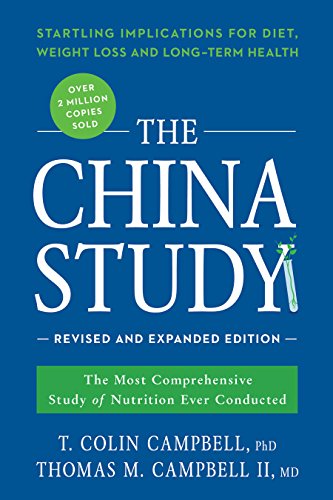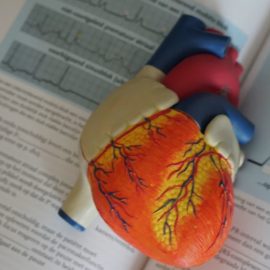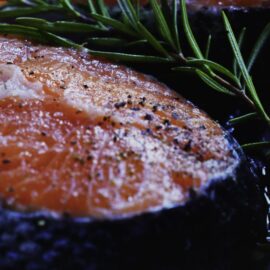

This article is an excerpt from the Shortform summary of "The China Study" by Colin Campbell. Shortform has the world's best summaries of books you should be reading.
Like this article? Sign up for a free trial here .
What is The China Study book? What can we learn from it? And why is it controversial?
The China Study book is a book on disease prevention through diet by T. Colin Campbell, who led the Cornell team, and his son Thomas M. Campbell. It’s named for the China Study, a landmark observational study conducted by teams from Cornell, Oxford, and the Chinese Academy of Preventive Medicine. The 1980s study examined the lifestyles, diets, and diseases of inhabitants of rural China.
Also known as the China-Cornell-Oxford Project, this study is controversial because researchers concluded that animal products like meat and dairy cause most Western diseases. We’ll cover the lessons of the China Study and what the lead researcher, T. Colin Campbell, has to say to its critics.
Origins of the China Study
Campbell’s previous research showed a strong link between consuming casein, the primary protein in milk, and liver cancer risk. His studies and those of Indian researchers had been done with rats. Now, Campbell wanted to see if the findings also applied to humans.
This was one of the aims of the China Study, the most comprehensive survey of its kind.
In collaboration with the Chinese Academy of Preventive Medicine and the University of Oxford, Campbell’s team traveled to 65 rural and semi-rural Chinese counties, collecting blood and administering questionnaires to 6,500 adults.
Once for every subject over the course of a year, researchers obtained urine samples, measured what families ate over a three-day period, visited marketplaces to analyze food samples, and accumulated data on 367 variables. This was the China Study.
They examined 48 different diseases and found more than 8,000 statistically significant associations among disease variables, diet, and lifestyle.
Why China?
Studying people in rural China in the China Study allowed researchers to rule out genetics as a major factor in disease formation because, compared to other areas of the world, rural China contains populations with homogeneous genes. 87% of the Chinese are of the same ethnic group, the Han.
Additionally, 90-94% of the adults studied were living in the county where they were born. The lack of migration meant that the genes in the population were relatively similar.
Even though the Chinese share the majority of their genes, they don’t all have the same cancer risk. For example, some Chinese counties have much higher cancer rates than others, and some types of cancers are much more prevalent in some places.
As mentioned earlier, genes make up only 2-3% of a person’s total cancer risk. Therefore, the other 97-98% must be environmental or related to lifestyle. The fact that the Chinese share most of their genes but get different cancers supports this statistic.
Lessons from the China Study
What is the China Study, and what were its findings? From the study, researchers learned several lessons that informed the way they viewed America’s various health problems.
China Study Lesson #1: There are diseases of poverty and diseases of affluence
Researchers had access to mortality rates in China for more than 40 diseases. This gave them the opportunity to study which causes of death were most common, and where.
They found that certain diseases clustered in particular parts of the country, indicating that these diseases shared a cause.
As they compared disease rates, a pattern emerged. There were two groups of diseases:
- Diseases of affluence are diseases common in developed, economically prosperous areas. They’re also known as diseases of “nutritional extravagance” because they’re linked to “rich” diets high in protein and fat. These diseases include coronary heart disease, cancer, and diabetes.
- Diseases of poverty are diseases found in poor rural or developing areas. They include parasitic disease, pneumonia, peptic ulcer, rheumatic heart disease, and pulmonary tuberculosis.
Diseases of affluence begin to displace diseases of poverty when a population accumulates wealth and consequently changes their lifestyles, diets, and sanitation systems. They start to live more like Westerners.
When researchers saw that some Chinese counties had far higher rates of “rich,” typically-Western diseases than the rest of the country, they explored the question of whether these diseases were linked to eating habits.
Diseases of Affluence and Blood Cholesterol
Researchers found that a subject’s blood cholesterol level was one of the strongest predictors of developing “rich” diseases. The lower your cholesterol, the lower your risk of heart disease and at least ten cancers, including lung, liver, colon, breast, and brain cancers.
American women, who eat a “rich” diet, die from breast cancer at a rate five times higher than women in rural China, who eat a “poor” diet. American men die from coronary heart disease at a rate 17 times higher than men in rural China.
That blood cholesterol was linked to so many Western diseases was surprising at the time. But what particularly shocked the researchers was how little cholesterol it took to increase your disease risk. Cholesterol levels of high-risk populations were so low that researchers initially doubted their results.
Western scientists in the 1980s believed that blood cholesterol never got below 140-150 mg/dL. They even thought cholesterol levels this low could pose health problems.
But they had determined the lower limit of blood cholesterol by examining only Western subjects. In the China Study, the average cholesterol level for adults ages 35 to 64 was 127 mg/dL. This meant the average cholesterol level in China was lower than what Western researchers thought was even possible.
For context, the American average is 215 mg/dL. We think we’re doing pretty well when our cholesterol is around 170 mg/dL. But 170 mg/dL was high for the Chinese subjects, and researchers found that those in China with blood cholesterol levels around 170 were the most likely to die of diseases of affluence.
Researchers were clearly wrong to think that with such overall low cholesterol levels in China, there would be no further association between cholesterol and Western diseases. As blood cholesterol decreased from 170 mg/dL to 90 mg/dL, coronary heart disease and cancer rates decreased. They concluded that even small amounts of cholesterol in your blood put you at risk.
China Study Lesson #2: The Chinese eat far more plants and far fewer animal products than Americans
One goal of the China Study was to compare the Chinese with other Chinese, determining why some were at a higher risk for certain diseases than others. Another goal of the study was to compare the Chinese with Americans. They hoped to clarify the link between diet and diseases of affluence, possibly explaining why Americans die of these diseases at a much higher rate than the Chinese.
As expected, they found major differences when comparing the typical Chinese and American diets:
| Nutrient | Chinese Intake | American Intake |
| Protein (% of calories) | 9-10 | 15-16 |
| Animal Protein (% of total protein) | 10 | > 81 |
| Fat (% of calories) | 14.5 | 34-38 |
| Fiber (grams/day) | 33 | 12 |
| Iron (milligrams/day) | 34 | 18 |
| Calories (kcal/day) | 2,641 | 1,989 |
In summary, the rural Chinese ate less animal protein, less protein overall, and less fat than Americans. They consumed much more fiber and iron. The Chinese also consumed more calories than Americans, but as we’ll see, their disease risk and weight were still lower. (See Lesson #5 for an explanation of this phenomenon.)
Because of dramatic differences in the eating habits of the two countries, the China Study was able to compare an essentially plant-based diet with an animal-based diet.
This kind of study is rare. Most Western studies, even those purporting to look at the effects of animal-based foods on diseases, compare diets containing a lot of animal foods with diets containing even more animal foods. Our idea of what a diet “low” in animal foods looks like still allows for a lot of animal protein, compared with the low consumption of meat and dairy in other countries.
China Study Lesson #3: Animal protein leads to high blood cholesterol
Lesson #1 revealed the dangers of blood cholesterol. If virtually any amount of cholesterol in the blood is bad, how do we decrease it?
In the study, plant foods were correlated with decreasing levels of blood cholesterol and animal foods were correlated with increasing levels of blood cholesterol.
Foods and nutrients that were shown to increase blood cholesterol included animal protein, fat, and foods like eggs, milk, meat, and fish.
Foods and nutrients that were shown to decrease blood cholesterol included plant protein, fiber, B-vitamins, legumes, fruit, carrots, potatoes, and some grains.
Of all the dietary factors, animal protein had the strongest association with increased blood cholesterol. Eating saturated fat and cholesterol in foods also strongly increased levels, but not as dramatically as eating animal protein.
So why were Chinese cholesterol levels so much lower than American cholesterol levels? Because in rural China, people only eat an average of 7.1 grams of animal protein a day. That’s the amount of protein in three McDonald’s chicken nuggets. For comparison, in America, people eat an average of 70 grams of animal protein a day.
Researchers concluded that cutting down on animal proteins was the most effective way to lower your blood cholesterol and, therefore, your risk of numerous diseases of affluence.
China Study Lesson #4: Antioxidants protect us from free radicals
Antioxidants are found in plant foods like berries, nuts, leafy greens, and beans. Researchers recorded their subjects’ intakes of antioxidants like vitamin C and beta-carotene and analyzed levels of vitamin C, vitamin E, and carotenoids in blood samples.
They found several associations between lower levels of antioxidants and a higher risk of cancer. To understand the benefit of antioxidants, let’s look at what they are and how they work in the body.
Antioxidants, the chemicals that give fruits and vegetables their vivid hues, are produced by plants during photosynthesis. When the plant converts sunlight to energy, errant electrons can create free radicals. Free radicals destroy the plant’s tissues. In order to protect themselves, plants have evolved electron-scavenging shields made up of antioxidants.
Human bodies also produce free radicals. Sun exposure, pollution, and poor nutrition can all increase free radical levels in our bodies. Free radicals hamper the ability of our cells and tissues to function, leading to diverse diseases and health issues such as cancer, cataracts, arthritis, and emphysema. We can create our own protective shield against these diseases by consuming foods rich in antioxidants.
Vitamin C
In the China Study, vitamin C was particularly impressive. Families that had low blood levels of vitamin C were more likely to develop cancer.
Researchers found associations between vitamin C and cancers including leukemia, breast cancer, lung cancer, liver cancer, colon cancer, and esophageal cancer. They also found associations between vitamin C and heart disease and stroke.
Further, in areas where residents consumed the least amount of fruit, cancer rates were five to eight times higher than in communities that consumed the most fruit.
But avoid the temptation to rely on your vitamin C tablets. We should not be getting our vitamins from supplements. (See Chapter 14.) Rather, we should get our antioxidants from whole foods.
China Study Lesson #5: Decreasing calories doesn’t necessarily decrease your body weight
Because rural Chinese engaged in more manual labor and were, therefore, more physically active than typical Americans, researchers compared the calories consumed by the least active Chinese with the calories consumed by the average American.
The least active Chinese ate 30% more calories per kilogram of body weight than the average American. But the bodyweight of these Chinese subjects was 20% lower than Americans’. In other words, the Chinese consumed more calories than Americans but weighed less.
This is because what we eat influences how we store fat in the body. If we eat a diet high in fat and protein, we store more calories as fat, as Americans do. Conversely, if we eat a diet low in fat and protein, we lose more calories as body heat, as the Chinese do.
China Study Lesson #6: We don’t need animal protein for physical strength and growth
For centuries, we’ve associated the consumption of animal foods with strength, virility, and dominance. Can we meet our growth potential without them?
Researchers found that consuming more protein was linked to bigger body size. However, 90% of the protein the Chinese ate was plant protein.
Both animal protein and plant protein are linked to greater body weight and body height, but consuming plant protein comes with fewer risks. You can achieve your genetic potential for growth and strength eating solely plant-based foods.
But keep in mind that when consuming plant-based protein, variety matters.
In poor areas where people lacked variety in their food choices, growth was stunted. This was likely due to the prevalence of diseases of poverty and their effect on growth. Eating a variety of plant-based foods minimized both diseases of affluence and diseases of poverty.
All plants contain protein, but foods high in plant-based proteins include soy products, lentils, nuts, seeds, and grains. It’s important to eat a variety of plants since most don’t have all eight essential amino acids. So, for example, rather than getting your protein from lentils at every meal, mix up the types of legumes you eat and pair them with various grains.
Why is the China Study Controversial?
It’s impossible to answer the question, “What is the China Study?” without addressing its detractors. Saying that meat and dairy cause most Western diseases is a huge claim and, predictably, many American industries and meat-eating researchers weren’t pleased. Campbell addresses some of the critiques of the study since the first edition of The China Study book was published. The critiques address both the China Study and The China Study book.
Critique #1
Investigating more than one factor at a time is a “shotgun approach.”
Many scientists believe that the best and most reliable experiments are the ones that isolate a single factor for investigation. For example, a researcher may choose the single factor of selenium and analyze its effect on breast cancer risk.
But Campbell believes health is a holistic phenomenon (he terms it “wholistic,” adding the “w” to emphasize the term’s link to whole foods and an approach to health that addresses the whole person). All the chemicals in a particular food work together to promote or weaken health.
Therefore, no single nutritional factor causes a disease. The health of the human body depends on complex and various mechanisms with numerous known and unknown inputs and outputs. Isolating one factor isn’t necessarily helpful, nor are the results of these kinds of experiments conclusive. Further, diet works in tandem with other lifestyle factors such as physical activity, making it even more difficult to isolate one dietary factor as a cause of disease.
The goal of the China Study was to examine dietary patterns. It doesn’t provide proof, but it provides enough information on which to base everyday dietary decisions.
Critique #2
Campbell equates correlation and causation. In other words, critics have accused Campbell of claiming that because there’s an association between animal foods and disease, these diseases are caused by animal foods.
Campbell again acknowledges that his studies don’t constitute proof, and he’s never claimed they did. He also says again that many factors interact to cause health or illness, and you can’t claim that any one thing, including eating animals, causes disease.
However, he believes a lack of proof doesn’t mean we should ignore the associations found in the China Study.
Critique #3
The book relies solely on data from the China Study and therefore doesn’t acknowledge the wide range of findings and opinions.
Campbell calls this critique nonsense. While this single chapter focuses primarily on the China Study, the book draws on the findings of hundreds of other studies and researchers. These studies can be found in the extensive References section. Together, they form a compelling picture of how our eating patterns in the West impact our risk of disease.
Summary of Recommendations
- Reduce, or eliminate, your consumption of animal foods—both animal protein and dietary cholesterol (only found in animal foods) are strongly associated with increased blood cholesterol, which heightens your risk of heart disease and cancer.
- Eat a variety of fruits and vegetables to increase your antioxidant intake and protect yourself against free radicals. This also ensures you’re getting all the essential amino acids for healthy growth and increased strength.
- Focus particularly on consuming vitamin C in whole foods like peppers, strawberries, broccoli, papayas, and peas.
- Eat plant foods high in protein, such as soy products, lentils, nuts, seeds, and grains.
To sum up, What is the China Study? It’s a landmark study that examined the diets of 6,500 people and determined that consumption of animal products leads to disease.
———End of Preview———

Like what you just read? Read the rest of the world's best summary of "The China Study" at Shortform . Learn the book's critical concepts in 20 minutes or less .
Here's what you'll find in our full The China Study summary :
- Why animal proteins (meat, milk) might cause cancer, diabetes, and other diseases
- Why the medical institution is structured to hide the truth about disease and food
- The precise diet you'll need to eat to live longer and feel happier






